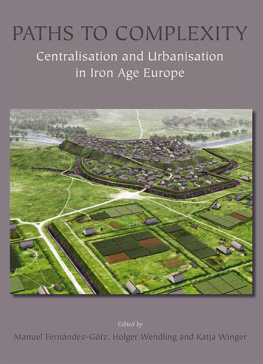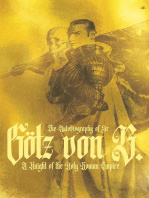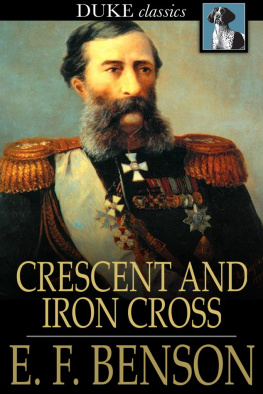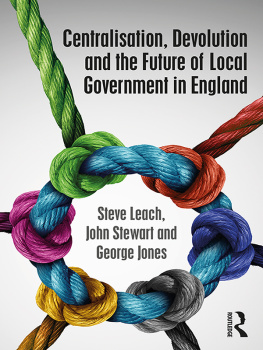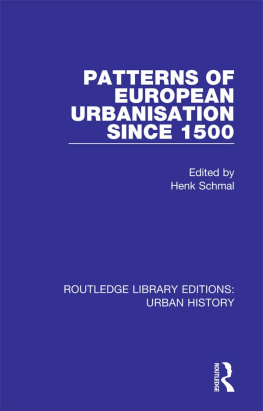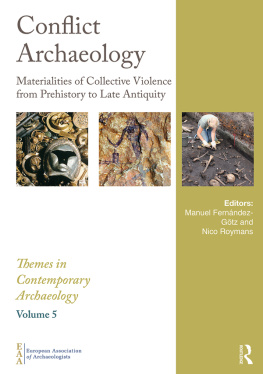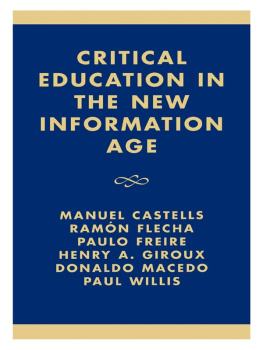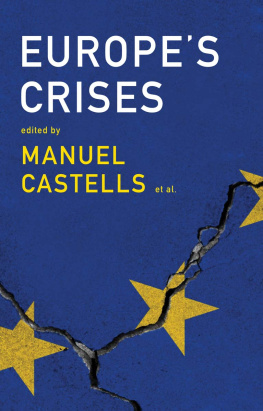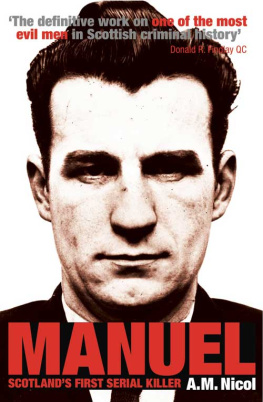Fernández-Götz Manuel - Paths to Complexity - Centralisation and Urbanisation in Iron Age Europe
Here you can read online Fernández-Götz Manuel - Paths to Complexity - Centralisation and Urbanisation in Iron Age Europe full text of the book (entire story) in english for free. Download pdf and epub, get meaning, cover and reviews about this ebook. year: 2014, publisher: Oxbow Books, Limited, genre: Romance novel. Description of the work, (preface) as well as reviews are available. Best literature library LitArk.com created for fans of good reading and offers a wide selection of genres:
Romance novel
Science fiction
Adventure
Detective
Science
History
Home and family
Prose
Art
Politics
Computer
Non-fiction
Religion
Business
Children
Humor
Choose a favorite category and find really read worthwhile books. Enjoy immersion in the world of imagination, feel the emotions of the characters or learn something new for yourself, make an fascinating discovery.
- Book:Paths to Complexity - Centralisation and Urbanisation in Iron Age Europe
- Author:
- Publisher:Oxbow Books, Limited
- Genre:
- Year:2014
- Rating:5 / 5
- Favourites:Add to favourites
- Your mark:
- 100
- 1
- 2
- 3
- 4
- 5
Paths to Complexity - Centralisation and Urbanisation in Iron Age Europe: summary, description and annotation
We offer to read an annotation, description, summary or preface (depends on what the author of the book "Paths to Complexity - Centralisation and Urbanisation in Iron Age Europe" wrote himself). If you haven't found the necessary information about the book — write in the comments, we will try to find it.
Paths to Complexity - Centralisation and Urbanisation in Iron Age Europe — read online for free the complete book (whole text) full work
Below is the text of the book, divided by pages. System saving the place of the last page read, allows you to conveniently read the book "Paths to Complexity - Centralisation and Urbanisation in Iron Age Europe" online for free, without having to search again every time where you left off. Put a bookmark, and you can go to the page where you finished reading at any time.
Font size:
Interval:
Bookmark:
Published in the United Kingdom in 2014 by
OXBOW BOOKS
10 Hythe Bridge Street, Oxford OX1 2EW
and in the United States by
OXBOW BOOKS
908 Darby Road, Havertown, PA 19083
Oxbow Books and the individual authors 2014
Hardcover Edition: ISBN 978-1-78297-723-0
Digital Edition: ISBN 978-1-78297-724-7; Mobi: ISBN 978-1-78297-725-4; PDF: ISBN 978-1-78297-726-1
A CIP record for this book is available from the British Library
All rights reserved. No part of this book may be reproduced or transmitted in any form or by any means, electronic or mechanical including photocopying, recording or by any information storage and retrieval system, without permission from the publisher in writing.
Printed in the United Kingdom by Short Run Press Ltd, Exeter
For a complete list of Oxbow titles, please contact:
UNITED KINGDOM
Oxbow Books
Telephone (01865) 241249, Fax (01865) 794449
Email:
www.oxbowbooks.com
UNITED STATES OF AMERICA
Oxbow Books
Telephone (800) 791-9354, Fax (610) 853-9146
Email:
www.casemateacademic.com/oxbow
Oxbow Books is part of the Casemate Group
Front cover: 3D reconstruction of the Heuneburg at the height of its prosperity in the first half of the 6th century BC (after Fernndez-Gtz & Krausse 2013; Landesamt fr Denkmalpflege Baden-Wrttemburg)
CONTENTS
Prof. Michael E. Smith
Manuel Fernndez-Gtz, Holger Wendling and Katja Winger
John Collis
Manuel Fernndez-Gtz
Pierre-Yves Milcent
Raphal Golosetti
Vladimr Sala
Albta Danielisov
Dominik Lukas
Sabine Rieckhoff
Caroline von Nicolai
Veronika Holzer
Holger Wendling and Katja Winger
Tom Moore and Cme Ponroy
Matthieu Poux
Ian Armit, Tim Horsley, Chris Gaffney, Frdric Marty, Nathan Thomas, Robert Friel and Ashley Haye
Lars Blck, Andrea Bruning, Eckhard Deschler-Erb, Andreas Fischer, Yolanda Hecht, Corina Knipper, Reto Marti, Michael Nick, Hannele Rissanen, Norbert Spichtig and Muriel Roth-Zehner
Sabine Hornung
Jess R. lvarez-Sanchs and Gonzalo Ruiz-Zapatero
Francisco Burillo-Mozota
Niall Sharples
FOREWORD
I remember vividly the bright winter morning a year ago when Manuel Fernndez-Gtz gave me a tour of the Heuneburg. The site was officially closed for the season, and it was covered with snow. I had read some articles on the Heuneburg, and I had just listened to some presentations on the Heuneburg and other Iron Age settlements at a conference in Stuttgart that had brought me to Germany. But there is no substitute for walking over an ancient urban site. Archaeologists can learn about sites by reading reports and articles, but the experience of being there adds something intangible yet important to ones understanding. When I walk through a deserted landscape that had once been filled with ancient buildings, people and their activities, the dry professional facts about post-holes, radiocarbon dates, and potsherds come alive.
My visit of the Heuneburg brought to culmination a personal process of discovery of Iron Age urbanisation and its importance within the broad realm of urban studies. For many years I had included the oppida in the course I teach on the earliest cities. When I started teaching this class two decades ago, I presented the oppida of the Late Iron Age as an example of settlements that had a few urban traits (e.g., craft specialisation and fortification), but were not cities or urban settlements. My context of comparison was the cities of the great ancient civilisations, from Mesopotamia to Mesoamerica (Smith 2007; 2008). The oppida provided a good teaching example to explore the limits of the concepts of city and urbanism in the ancient world. But over the years, as my knowledge and understanding of comparative urbanism grew, I came to accept the oppida as urban settlements. This change was partly due to the fact that I learned more about the oppida, and partly due to my own changing concept of urbanisation and its varied forms around the world and through time.
Then Manuel sent me the draft of a paper he and Dirk Krausse had written arguing that the start of urbanism north of the Alps should be pushed back to the Early Iron Age, at the Heuneburg (Fernndez-Gtz & Krausse 2013). My first reaction before reading the paper was skeptical. I worried that a couple of craft workshops and a fancy burial or two would be used to argue for Early Iron Age urbanism. Archaeologists always want to find the earliest example of things, whether artifact types or social institutions, and such claims are sometimes based on flimsy evidence. But I found the article convincing, and so I was excited when Manuel invited me to the conference on Iron Age urbanism and society in Stuttgart last year. Most of the participants seemed comfortable with the concept of Early Iron Age urbanism, including Colin Renfrew and Kristian Kristiansen.
From one perspective, the question of whether the Heuneburg is classified as an urban settlement is not important. For our understanding of that site, it is far more important to describe and explain the particular manifestations of Iron Age life and society than to classify the settlement. The Heuneburg is clearly a significant site whose excavation extends our knowledge of the Early Iron Age, whether one uses the label city, a town, a fort, or village. But from the broader perspective of comparative urbanism, re-classifying the Heuneburg as an urban settlement has two big advantages. First, it allows data from that site and other Early Iron Age sites to contribute to discussions of the nature of urbanism around the world. Comparative urban scholars can add another case a unique and fascinating case to our sample of early urban societies. Second, archaeologists who work at the Heuneburg can draw on the concepts and insights of comparative urban studies to add richness to their reconstructions of life, society, and change at the Heuneburg.
These dual advantages of acknowledging the urban nature of the Heuneburg adding to our sample of ancient urban societies, and contributing insights to the study of the site also apply to the Late Iron Age oppida sites. Although John Collis (1984) called the oppida the earliest towns north of the Alps three decades ago, my impression is that Iron Age scholars and comparative urban scholars were both slow to acknowledge this insight. Now, in 2014, there is no excuse to leave the oppida out of discussions of early urbanism.
The overall scholarly trend in the field of Iron Age urbanisation parallels the changes in the way I presented the oppida in my university class. As more evidence accumulated and views of the nature of cities and urbanism expanded, it became increasingly clear that the Iron Age (both Early and Late) was the setting for some complex and unique urban societies in Europe.
This book appears at a crucial time. It marks the clear arrival of a new view of urbanism and social complexity in Iron Age Europe. Much of the primary excavation data have been published previously in German, French, Spanish, and other languages. While that is only a minor problem for Iron Age scholars, comparative urban scholars like me who are fascinated by these sites can typically read only a few of these languages. Much of the information in this book appears in English for the first time, and it will bring the Iron Age to a new English-language audience. To take just one example, I have long considered Manching a fascinating site, yet I had access to only a few papers in English and the short descriptions in Fichtl (2005). The chapter here by Wendling and Winger greatly extends the English-language coverage of Manching, and there are similar benefits for other sites and regions throughout these chapters.
Next pageFont size:
Interval:
Bookmark:
Similar books «Paths to Complexity - Centralisation and Urbanisation in Iron Age Europe»
Look at similar books to Paths to Complexity - Centralisation and Urbanisation in Iron Age Europe. We have selected literature similar in name and meaning in the hope of providing readers with more options to find new, interesting, not yet read works.
Discussion, reviews of the book Paths to Complexity - Centralisation and Urbanisation in Iron Age Europe and just readers' own opinions. Leave your comments, write what you think about the work, its meaning or the main characters. Specify what exactly you liked and what you didn't like, and why you think so.

